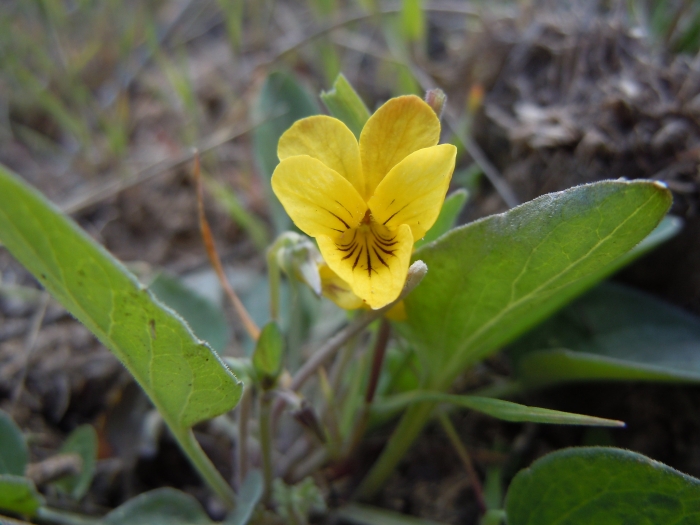Sagebrush Violet
(Viola vallicola)
Sagebrush Violet (Viola vallicola)
/
/

Matt Lavin
CC BY-SA 2.0
Image By:
Matt Lavin
Recorded By:
Copyright:
CC BY-SA 2.0
Copyright Notice:
Photo by: Matt Lavin | License Type: CC BY-SA 2.0 | License URL: https://creativecommons.org/licenses/by-sa/2.0/ | Uploader: Matt Lavin | Publisher: Flickr |


























Estimated Native Range
Summary
Viola vallicola, commonly known as Sagebrush Violet, is an evergreen perennial herb native to the sagebrush steppe and grasslands of the Northern Intermountain regions of the USA, as well as the plains and prairies of Southern Canada. It typically grows to a modest height and width of about 0.5 feet (0.2 meters), forming a low, mounding tuft. The Sagebrush Violet is characterized by its heart-shaped leaves and bright yellow flowers that bloom in the spring and early summer, adding a splash of color to the landscape. The flowers are modest in size but can be quite showy due to their vibrant hue.
This plant is valued for its drought tolerance and ability to thrive in challenging environments, making it a suitable choice for rock gardens, xeriscaping, and native plant gardens. It is also used to provide early-season nectar for pollinators. In cultivation, Sagebrush Violet prefers full sun but can tolerate partial shade. It requires low amounts of water once established, reflecting its adaptation to dry habitats, and it grows best in well-drained soils. While generally low-maintenance, it can be susceptible to root rot if overwatered or planted in poorly drained soils.CC BY-SA 4.0
This plant is valued for its drought tolerance and ability to thrive in challenging environments, making it a suitable choice for rock gardens, xeriscaping, and native plant gardens. It is also used to provide early-season nectar for pollinators. In cultivation, Sagebrush Violet prefers full sun but can tolerate partial shade. It requires low amounts of water once established, reflecting its adaptation to dry habitats, and it grows best in well-drained soils. While generally low-maintenance, it can be susceptible to root rot if overwatered or planted in poorly drained soils.CC BY-SA 4.0
Plant Description
- Plant Type: Herb
- Height: 0.2-0.9 feet
- Width: 0.111-0.5 feet
- Growth Rate: Moderate
- Flower Color: Yellow
- Flowering Season: Spring, Summer
- Leaf Retention: Evergreen
Growth Requirements
- Sun: Full Sun, Part Shade
- Water: Low
- Drainage: Medium
Common Uses
Bee Garden, Butterfly Garden, Deer Resistant, Low Maintenance
Natural Habitat
Sagebrush steppe and grasslands of the Northern Intermountain regions of the USA and the plains and prairies of Southern Canada
Other Names
Common Names: Yellow Sagebrush Violet , Valley Violet , Yellow Prairie Violet , Violette Vallicole
Scientific Names: Viola vallicola , Viola nuttallii var. vallicola , Viola physalodes , Viola russellii , Viola subsagittifolia , Viola nuttallii subsp. vallicola , Crocion vallicola
GBIF Accepted Name: Viola vallicola A.Nelson